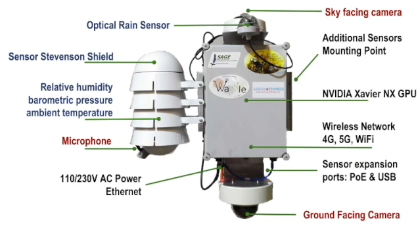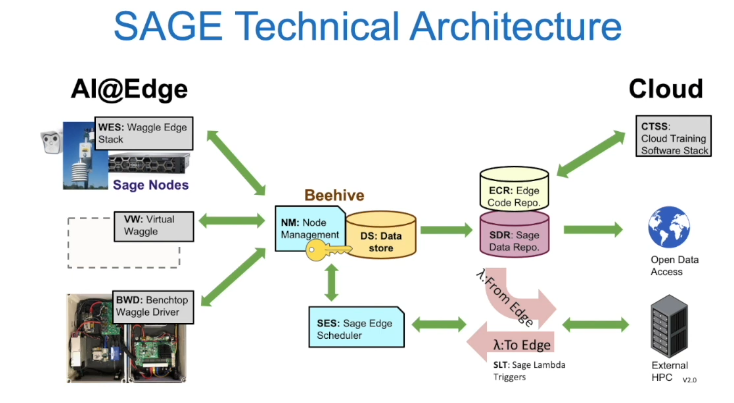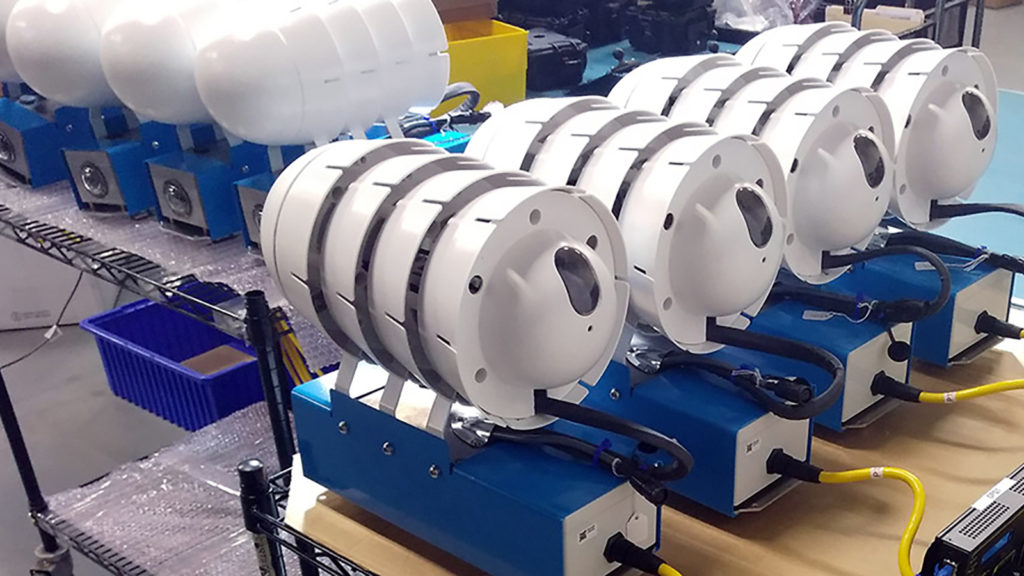“Exascale only becomes valuable when it’s creating and using data that we care about,” said Pete Beckman, co-director of the Northwestern-Argonne Institute of Science and Engineering (NAISE), at the most recent HPC User Forum. Beckman, head of an Argonne National Laboratory edge computing project called Waggle, was insistent on one thing: edge computing is a crucial part of delivering that value for exascale.
Beckman had opened with a quote from computer architect Ken Batcher: “A supercomputer is a device for turning compute-bound problems into I/O-bound problems.” “In many ways, that is still true today,” Beckman said. “What we expect from supercomputers is that they’re so blindingly fast that really it’s bottlenecked on either reading or writing from input or output.”
“If we take that concept, though, and flip it over,” he added, “then we end up with this idea that edge computing, therefore, is a device for turning an I/O-bound problem into a compute-bound problem.”
Beckman outlined what he viewed as the new paradigm of high-performance computing: one defined by extreme data production – more than could ever be efficiently moved to supercomputers – by massive detectors and instruments like the Large Hadron Collider and radio telescopes. This paradigm, he said, resulted in a series of research problems where it would be more efficient to examine data at the edge and filter only the important or interesting data to supercomputers for heavy-duty analysis.
There were a number of reasons, Beckman explained, why edge processing might be preferable: more data than bandwidth, of course – but also a need for low latency and quick actuation, as in self-driving cars; privacy or security requirements that prevent the transfer of sensitive or personalized data; a desire for additional resilience through distributed processing; or energy efficiency.
Beckman, for his part, advances this new paradigm – which he said “has been made possible largely because of AI” – through Waggle, which began as a wireless sensor system aimed at enabling smarter urban and environmental research. With Waggle, Beckman said, “the idea was to understand the dynamics of a city” through pedestrian monitoring, air quality analysis and more. The initial generation of sensors had been installed all around Chicago, generating data that was then shared with scientists.
The newest version of the Waggle sensor, Beckman said, has just been developed and is much beefier: an AI-enabled edge computing platform that crunches incoming data using an Nvidia Xavier NX GPU. The platform is equipped with sky- and ground-facing cameras, atmospheric sensors, rain sensors and mountain points for even more sensors. Beckman added that Lawrence Berkeley National Laboratory is working on its own Waggle node configuration for one of its projects.

These Waggle sensors, Beckman explained, are building toward an even bigger vision – one embodied by the NSF-funded Sage project out of Northwestern University (also led by Beckman). Through Sage, he said, the goal was “to take these kinds of edge sensors and use them in networks across the United States to build what we call software-defined sensors,” flexible edge computers that are subsequently specialized for a purpose.
“The architecture for Sage … is pretty straightforward,” Beckman said. “At the edge, we’re processing data. … The data that’s extracted from an edge AI goes into the repository, the repository then can share that data with HPC apps, which can then process that data.” The Sage-enabled Waggle networks, Beckman said, were simple and secure, with no open ports. “You can’t connect to a Waggle node,” he said. “Nodes only phone home.”

Through Sage and Waggle, Beckman outlined a number of ongoing and prospective use cases. Huts equipped with Sage tech, he said, had already been installed alongside the ecological monitoring equipment for the 81-site, NSF-run NEON project, which has been running since 2000. Various other partnerships – including one between Sage and ALERTWildfire – were using edge processing tech like Waggle to advance low latency wildfire detection and data reporting. Other projects ranged from identifying pedestrian flow to classifying snowflakes to gauging policies’ effects on social distancing and mask-wearing during the pandemic.
“Really most of HPC has been focused on an input deck – some data that you get in, and then you compute and you make a visualization,” Beckman said. “It’s clear that the future of large HPC systems is in-the-loop processing, where data will come in, be processed, and it’s a live feed from the edge which is running the first layer of that HPC code.”
“Every group that we talk to about edge computing has a different idea. That’s what’s been so much fun about the concept of a software-defined sensor,” he added. “Being able to run that software stack on edge devices and report back by doing AI at the edge is a very new area, and we’re interested in seeing new use cases and what problems you might have – what ways you might connect your supercomputer with the edge.”
Header image: Waggle nodes. Image courtesy of Argonne National Laboratory.

